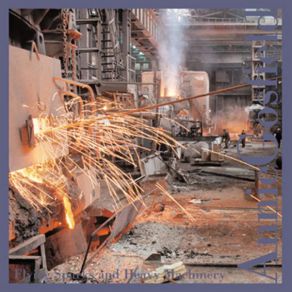Flying Sparks and Heavy Machinery
Download links and information about Flying Sparks and Heavy Machinery by Annie Gosfield. This album was released in 2001 and it belongs to Jazz, Avant Garde Jazz, Avant Garde Metal, Alternative, Classical genres. It contains 4 tracks with total duration of 57:10 minutes.

|
|
|---|---|
| Artist: | Annie Gosfield |
| Release date: | 2001 |
| Genre: | Jazz, Avant Garde Jazz, Avant Garde Metal, Alternative, Classical |
| Tracks: | 4 |
| Duration: | 57:10 |
| Buy it NOW at: | |
| Buy on iTunes $9.99 | |
| Buy on Amazon $9.49 | |
| Buy on iTunes $9.99 | |
Tracks
[Edit]| No. | Title | Length |
|---|---|---|
| 1. | EWA7 1999 - Rotation-The Rails to Furth-From Lever to Wheel... | 19:07 |
| 2. | EWA7 1999 - Puncher-The Product of Force and Motion Pipes... | 11:05 |
| 3. | EWA7 1999 - Impulse Turbine: Inet, Exhaust-Combustion Chamber | 12:20 |
| 4. | Flying Sparks and Heavy Machinery | 14:38 |
Details
[Edit]Annie Gosfield's outdone herself this time. The two compositions here, "EWA7" and the title piece, are related, first cousins, based in a sound world she discovered while traveling through the factories of Nuremberg trying to record enough sounds to create something that mirrored art and industry back to one another. A gargantuan piece over 42 minutes in length, "EWA7" is comprised of different machine sounds captured in their original landscapes from huge drill presses and steel rollers to the buzzing sound of arc lights overhead. From this cacophony of noise, Gosfield began to hear patters emerge and timbres assert themselves, even rhythms begin to make some kind of sense through the din. There are three movements in "EWA7" — named for the factory in which it was performed — and numerous sections within. There are all manner of industrial sounds, played by workers running cranes and presses, and organic percussion as well as industrial, played by not only workers but members of her ensemble like Jim Pugliese and Sim Cain and effects by Ikue Mori, Gosfield's sampling and tape manipulations, and Roger Kleier's electric guitar (a very altered electric guitar). Sections overlap, sounds disappear and return, insistent one moment whispering the next — all of them melding into a gorgeous dreamlike whole. The title track was composed for string and percussion quartets, based on the material she had discovered in Germany. In true mirror image, the piece is completely acoustic; there is no electronic tape or sampling. According to the composer she used transcriptions of on-site factory recordings and Russian constructivist-inspired manifestations of industrial activity. But the truth of the matter is, it sounds like a wondrously tense creation of tension, that between the tensile expressive nature of strings with all of their subtleties, and the dynamic, dramatic nature of percussion, not blended, but set in stark contrast to one another and making a language that exists somewhere in between. It's only a third the length of "EWA7" but with its wrangling sonorities and tonal implications, it doesn't need to be any longer. Without question, this Annie Gosfield's masterpiece thus far, and points in a direction that almost guarantees a new musical framework that will embody, include, and represent the sounds of everyday life in the art of the future.